As an environmental journalist covering stories from the great Arctic ice melt to the rhino poaching crisis in Africa, you’ll forgive me if sometimes in the morning—before I turn my computer on—I have a sudden desire to spend a few extra minutes in bed or have a leisurely breakfast with my daughter or just sit in the back yard with a cup of tea and a good book. You see, I’m often pricked with a feeling of dread as open up my computer, this oft-repeated thought ricocheting in my brain: “okay, Jeremy, what’s it going to be today?”
Will it be a new report on illegal logging in Southeast Asia, complete with details about people killing each other for pretty-colored timber? Or will it be a paper on how ocean acidification is melting the shells off aquatic creatures on which the whole marine food chain leans? Perhaps it will be another little-noticed article on another forgotten species falling closer to the edge of extinction? Or maybe it’ll be another indigenous tribe ignored or abused by their government? Why not rapidly rising temperatures, vanishing ice sheets, disintegrating permafrost, and ground cracking from drought? Or just another tale of apocalyptic famine facing some faraway country most of us think little about?
You can see why I might want to stay in bed.
So, you’ll understand when I encountered an odd sensation over the last few weeks after suddenly finding myself writing one positive story after another. The sensation wasn’t hope—I’m generally a hopeful person (you have to be in this line of work)—but it was more like quiet satisfaction—albeit even a little unsettling—a kind of “okay, this is nice…and I know it’s not going to last, but I should enjoy it while it’s here.”
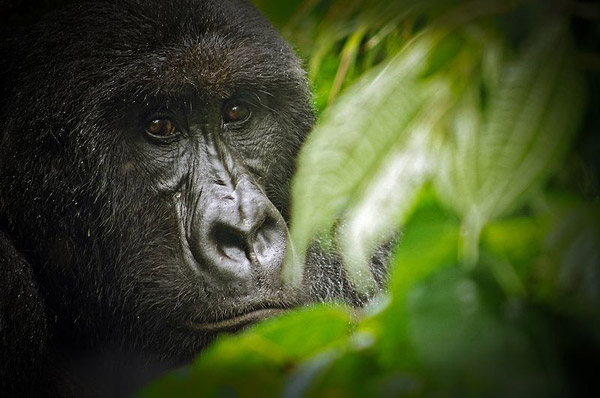
Gorilla in Virunga National Park. The news that oil company Soco International was suspending operations in the park was just one of several positive news developments on environmental issues lately. Photo by: LuAnne Cadd/Creative Commons 3.0.
There was the story of two young scientists who rediscovered a bat species in Papua New Guinea missing for…get this…124 years. Moreover, this incredibly small and endearing bat ranks number 32 in the top 100 most evolutionary distinct and endangered mammals created by the EDGE program, one of my go-to-places for the world’s most unusual creatures.
And there was the story that India has managed to grow its rhino population—even in the midst of a poaching crisis. In fact, the Indian rhino population in the state of Assam has jumped by 27 percent in just eight years: today, over 2,500 rhinos are found in Assam. This is all the more remarkable for the fact that at the beginning of the 1900s, this species was down to just 200 animals.
Across the planet, there was a very different story out of Chile. Here the government has rejected one of the world’s most controversial mega-dam projects: the HidroAysén project in Patagonia. A large coalition, supported by the majority of Chileans, fought long and hard against a project arguing it would threaten local communities and spoil the famous ruggedness of Patagonia. After a six year struggle, the government appeared to listen.
Then there was the shocking announcement that oil company Soco International was suspending its hugely controversial exploratory operations in Virunga National Park in the Democratic Republic of the Congo. Home to half of the world’s mountain gorillas, Virunga is also one of the most—maybe even the most—biodiverse parks on the continent. The announcement by Soco was all the more surprising as the company had ignored and deflected relentless criticism for years. Led by WWF—in an unusually no-holds barred campaign by the big NGO—their criticism was also echoed by the UN, the IUCN, and the British government. And then suddenly, this week, it was over and done. At least, for now.
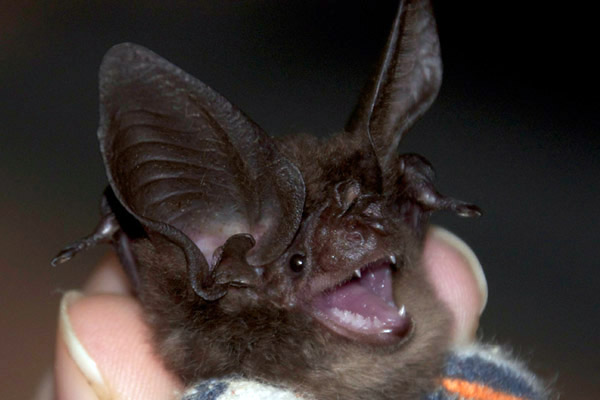
The first living New Guinea big-eared bat to be photographed. Photo by: Catherine Hughes.
But the biggest upbeat story of the last several weeks was about arguable the most important issue facing not only the current equilibrium of the natural world, but humanity itself: global warming. The Obama Administration finally released comprehensive plans to rein-in carbon pollution from the country’s power plants. The plan intends to cut the country’s carbon emissions by 30 percent by 2030 (based on 2005 levels). Then, less than a day later, China made the surprise announcement that it would set an absolute cap on its carbon emissions by 2016.
While these two news stories are positive in and of themselves, their real import lies in the fact that with the planet’s two biggest emitters appearing to take global warming more seriously, it could spur other countries to do the same. Under a best-case scenario, these moves could raise ambition and reignite a can-do attitude on tackling climate change.
Now, I’ve been at this long enough where I’m not naive. I realize this run of good news a bit of a brief fluke, albeit a happy one, in the constant tug-of-war of human follies. I don’t view a few news stories as some grand signal that the world has suddenly gotten wiser and more enlightened about our place on this fragile planet—though I do think that such collective wisdom is possible.
And, really, all of these happy stories lead to just as many questions as answers. For the rediscovered bat, the question is who will fund an expedition to find out how many bats are left and what they need? For the rhinos, how do we continue the progress—in the face of rising poaching—and replicate it for other embattled species?
.600.jpg)
Despite a poaching crisis, Indian rhino population are on the rise. Photo by: Yathin S. Krishnappa.
And for Chile, the question is where will the country make up the energy lost from not building the dams? If it’s through conventional fossil fuels, the cumulative impact could be just as great—or worse—than the dams, but if it’s through renewable energy or efficiency then this really might be a win-win.
For Virunga, the issue now becomes how to tackle ongoing violence in the park along with the legitimate needs of tens-of-thousands of people, mostly impoverished, living on the park’s edges.
Finally, when it comes to global warming policy, the U.S. and China’s announcements won’t amount to much unless both countries make good on their pledges thereby inspiring significantly more ambition—and urgency—from other countries. Maybe even the new climate bad boys on the block, i.e. Australia and Canada, will wake up.
But is there anything we can we learn from this run of good news? Each of these stories provides its own lessons, certainly. But really, they all point to two things in my view: tenacity and playing the long game.
In all of these cases, tenacity proved vital. The tenacity of a little bat, the tenacity of activists, and the tenacity of government officials.
For example, in its battle to keep Soco from drilling in Virunga, WWF proved uncharacteristically relentless and single-minded, releasing reports, press releases, and statements time-and-again. Undistracted and undeterred, the conservation group eventually won a major victory. Meanwhile, it took activists six years of hard work to convince the government of Chile that the dams were not in its best interest (let’s hope now they can convince them to embrace truly green energy). And it took the Obama Administration the same amount of time to really make good on the president’s campaign promise to begin tackling climate change. But sometimes a few years isn’t enough: it’s taken the Indian government over a century to boost rhino populations from a couple hundred to a couple thousand.
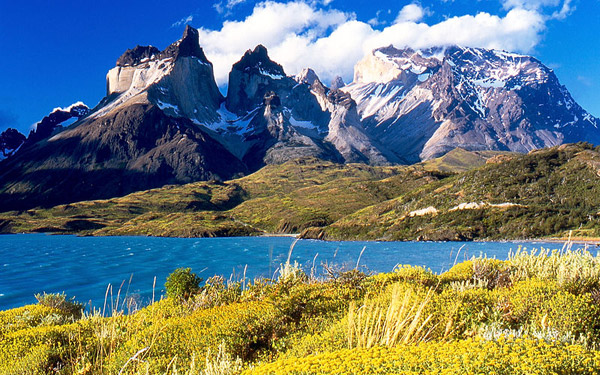
Torres del Paine National Park, Chile. The Patagonia region was spared a five-dam mega-project this week. Photo by: Miguel Vieira.
And that leads to my second point: conservation and environmentalism only works as a long game. If we’ve learned anything over the past few decades, it’s that no place is truly protected forever, no species is ever wholly beyond extinction, and balancing the needs of seven billion humans (and rising) without destroying the natural systems on which they rely will always be tenuous, challenging, and never perfect.
To take up a conservation challenge—any conservation challenge—requires resiliency, open-mindedness, and a calm patience that our species is rarely noted for. It requires a bizarre, seemingly contradictory, occurrence of both endless doggedness and an aptitude for flexibility, compromise, and innovation.
In fact, part of being a conservationist is coming to terms with the fact that victories are almost always partial and certainly always ephemeral. Whatever you are doing now may not bear fruition for a generation or more. And even if success is achieved, that success must be handed over to another caretaker—often another generation—with hopes that they will continue the work. Such long-distance thinking, however, allows us also to peer backward and see just how much today’s conservation success stories depended on dogged, innovative, and, at the time, wholly uncertain work by past environmentalists.
The end goal—if there is such a thing—of conservation and environmentalism is not in our lifetimes, our children’s, or even our grandchildren’s. Creating a more sustainable world with abundant wildlife populations, well-cared for human beings, and a new harmony between the natural world and our species isn’t going to happen overnight. In many ways it may be simply a utopian dream that has little bearing in reality. Then again it may not. And it’s this “maybe not” that’s really interesting, for even with all the gloom-and-doom practiced by some environmentalists, the very idea of environmentalism is optimistic; it’s crafting—and safeguarding—a more perfect world for both our children and those distant descendants we’ll never meet, but could probably pick out in a crowd.
In the end, even though I fully understand that the current series of positive news stories cannot last forever, and though I know that even the best news stories are marred by complexities and new questions, it has been a little easier this week to wake up and turn on my computer. Sometimes I even feel like popping open a bottle of Champagne.
But not yet. Not yet.
Related articles
Chile drops hugely controversial mega-dam project in wild Patagonia

(06/12/2014) One of the world’s most controversial mega-dam projects met its likely end this week when Chile’s Committee of Ministers voted to cancel the permits for the HidroAysén project. Costing around $8 billion and expected to produce about 2.75 gigawatts, the project involved building five large dams on two wild rivers in Chile’s famously-unspoiled Patagonia region.
Oil overthrow: Soco to suspend operations in Virunga National Park after sustained campaign by WWF
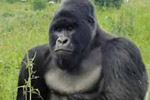
(06/11/2014) In a surprise announcement, British oil company Soco International has said it will suspend exploratory operations in Virunga National Park, home to half the world’s Critically Endangered mountain gorillas as well as thousands of other species. The announcement follows several years of campaigning from conservation groups led by WWF.
PhD students ‘thrilled’ to rediscover mammal missing for 124 years

(06/11/2014) In 1890 Lamberto Loria collected 45 specimens—all female—of a small bat from the wilds of Papua New Guinea. Nearly 25 years later, in 1914, the species was finally described and named by British zoologist Oldfield Thomas, who dubbed it the New Guinea big-eared bat (Pharotis imogene) after its massive ears. But no one ever saw the bat again.
Despite poaching, Indian rhino population jumps by 27 percent in eight years
(06/10/2014) The world’s stronghold for Indian rhinos—the state of Assam—has seen its population leap by 27 percent since 2006, despite a worsening epidemic of poaching that has also seen 156 rhinos killed during the same period. According to a new white paper, the population of Indian rhinos in Assam hit 2,544 this year.
Tropical nations make progress in slowing deforestation
(06/10/2014) Efforts to slow destruction of tropical forests seem to be paying off in a number of countries, argues a new report published by the Union of Concerned Scientists (UCS).
Guatemala establishes new reserve for endangered animals

(06/04/2014) Guatemala has formally established a 19,000-hectare (47,000-acre) reserve that protects several endangered bird and amphibian species, reports the American Bird Conservancy (ABC). The Sierra Caral Water and Forest Reserve received overwhelming support during a vote by Guatemala’s Congress. It is the first new protected area designated by Congress since 2005
Four donors pledge $80 million for big cats
(06/03/2014) Four donors from around the world have pledged $80 million to cat conservation group, Panthera. The money will fund projects working to preserve tigers, lions, jaguars, cheetahs, leopards, snow leopards, and cougars over ten years.
Turning point? U.S. and China announce major actions on global warming
(06/03/2014) Could 2014 be a turning point for efforts to slash global greenhouse gas emissions? Maybe: in less than 24 hours the world’s two largest emitters of carbon dioxide announced plans to finally rein-in the gas most responsible for global warming.
Happy Amazon: $215 million raised for world’s largest protected area network
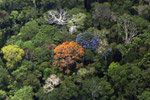
(05/21/2014) By all standards the Amazon Region Protected Areas (ARPA) program is gargantuan: the network includes over 90 parks, covers 51 million hectares, and comprises 15 percent of Brazil’s Amazon. But protecting an area bigger than Spain isn’t cheap or easy. Today, a broad coalition of government donors and private funders have announced $215 million to secure ARPA over the next 25 years.

(05/19/2014) A quiet zoo revolution has also been occurring over the past twenty-five years. Rather than just stand by the sidelines as species vanish in the wild, many zoos have begun funding on-the-ground conservation efforts. This revolution signals a widening realization by zoos of the positive—and wholly unique—role they could play in combating global mass extinction. But are zoos doing enough?